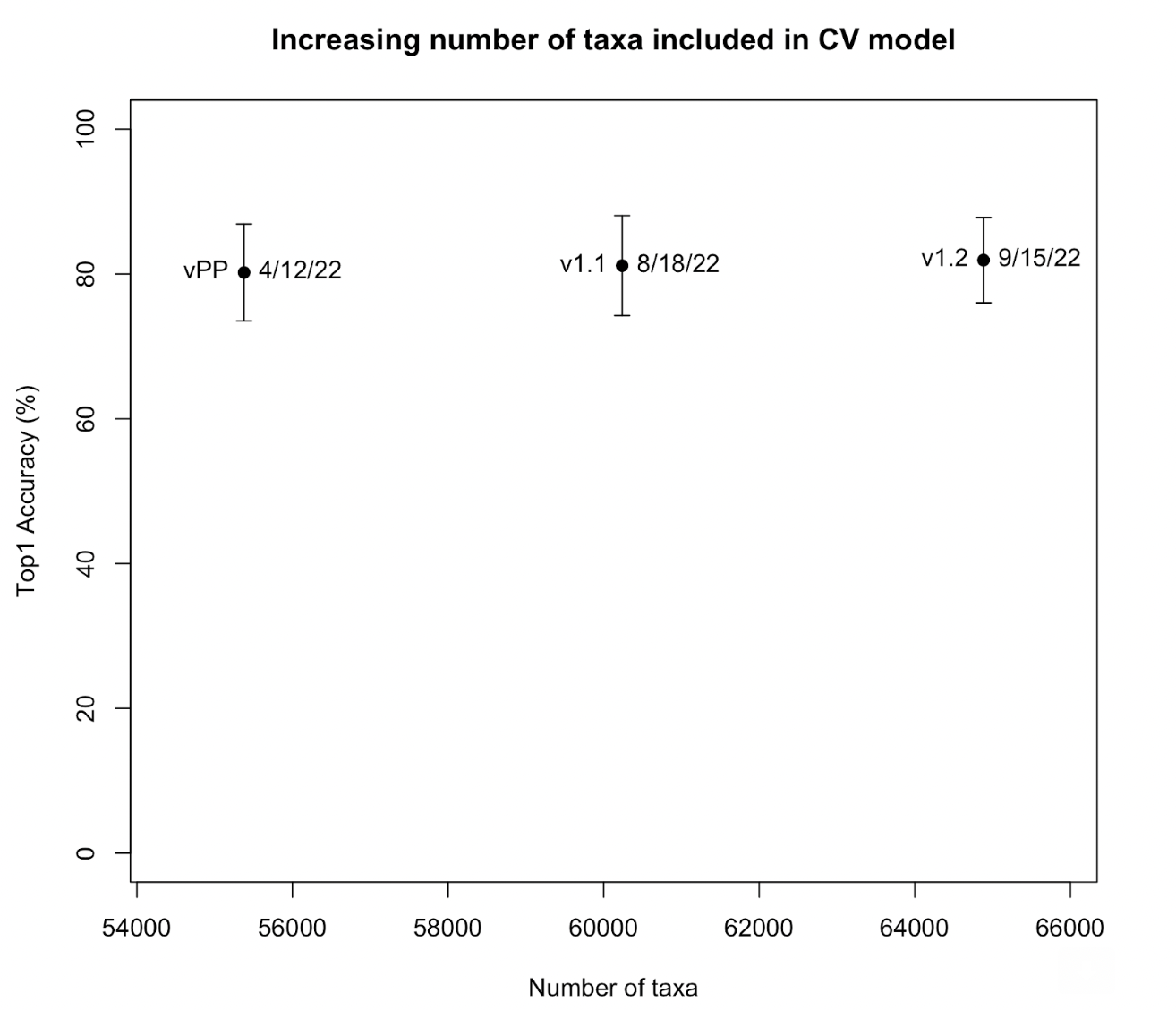A new Computer Vision Model including 1,383 new taxa in 40 days
We released a new computer vision model today. It has 67,553 taxa, up from 66,214. This new model (v1.4) was trained on data exported last month on October 9th and added 1,383 new taxa to the model it has replaced (v1.3).
Taxa differences to previous model
The charts below summarize these 1,383 new taxa using the same groupings we described in past release posts.

By category, most of these 1,403 new taxa were insects and plants

Here are species level examples of new species added for each category:
- Other Animalia
- Mollusca
- Aves
- Fungi
- Reptilia
- Plantae
- Insecta
- Actinopterygii
- Amphibia
- Chromista
- Arachnida
- Mammalia
Click on the links to see these taxa in the Explore page to see these samples rendered as species lists. Remember, to see if a particular species is included in the currently live computer vision model, you can look at the “About” section of its taxon page.
We couldn't do it without you
Thank you to everyone in the iNaturalist community who makes this work possible! Sometimes the computer vision suggestions feel like magic, but it’s truly not possible without people. None of this would work without the millions of people who have shared their observations and the knowledgeable experts who have added identifications.
In addition to adding observations and identifications, here are other ways you can help:
- Share your Machine Learning knowledge: iNaturalist’s computer vision features wouldn’t be possible without learning from many colleagues in the machine learning community. If you have machine learning expertise, these are two great ways to help:
- Participate in the annual iNaturalist challenges: Our collaborators Grant Van Horn and Oisin Mac Aodha continue to run machine learning challenges with iNaturalist data as part of the annual Computer Vision and Pattern Recognition conference. By participating you can help us all learn new techniques for improving these models.
- Start building your own model with the iNaturalist data now: If you can’t wait for the next CVPR conference, thanks to the Amazon Open Data Program you can start downloading iNaturalist data to train your own models now. Please share with us what you’ve learned by contributing to iNaturalist on Github.
- Donate to iNaturalist: For the rest of us, you can help by donating! Your donations help offset the substantial staff and infrastructure costs associated with training, evaluating, and deploying model updates. Thank you for your support!




Comentarios
Great to see the steady growth of the model!
My Fynbos Rambles have contributed to including this orchid. Thank you iNat!
https://www.inaturalist.org/taxa/593742-Satyrium-lupulinum
And 67 new plants for Western Cape :~))
I was just thinking about this yesterday about when the new CV update would come. Thanks to the Inat team for making this possible.
Is it possible to show the progress in recognation capability of the CV ? In the past there was een article about the difference in the models. i was just wondering if there is progress in the recognation. I will include this global.discourse image as an example but i also found some articles from 2017 which were also covering the subject "identification quality"
https://global.discourse-cdn.com/business6/uploads/inaturalist/optimized/3X/4/1/411be3628de256b0dc5e2c053e26d78f9999d50e_2_690x414.png
I thought in the past there were some articles like
https://forum.inaturalist.org/t/identification-quality-on-inaturalist/7507
https://www.inaturalist.org/pages/identification_quality_experiment
Follow-Up
Blog post "identification-quality-experiment" (April 5th, 2017)
Blog post "identification-quality-experiment" (May 9th, 2017)
Forum post "identification-quality-experiment" (May 9th, 2017)
Our main goal has been to keep accuracy about the same as the model gets bigger more complex with more species. This is a few models behind, but the trend has continued

Thank you!!
What means vPP in the first model on the left ? There seems nearly no difference in the models...!! It means that in 80% of the occurences the first option is the right option ?
vPP is the name of the model. It means the top 1 suggestion is correct about 80% of the time across all 3 models.
Añade un comentario